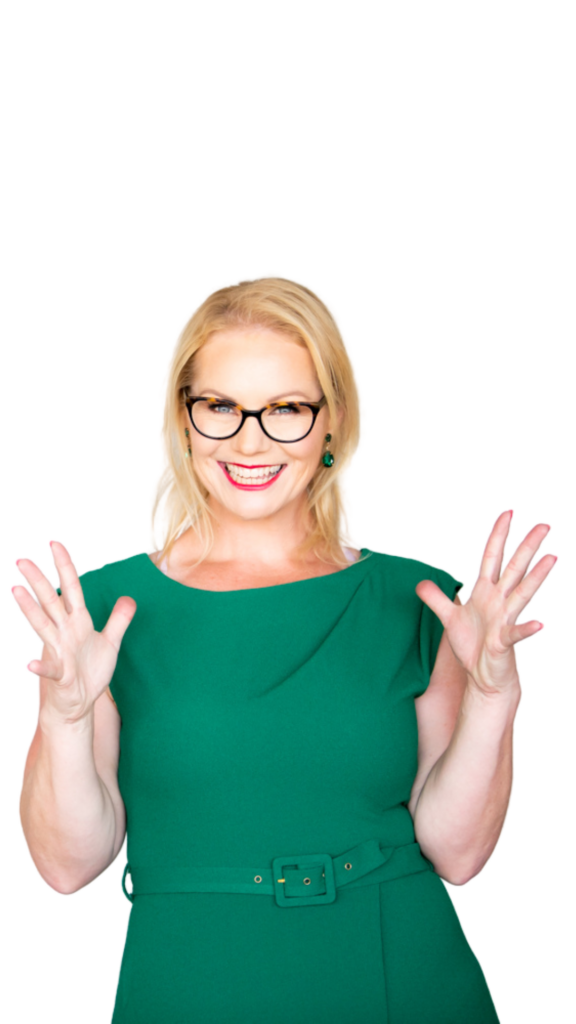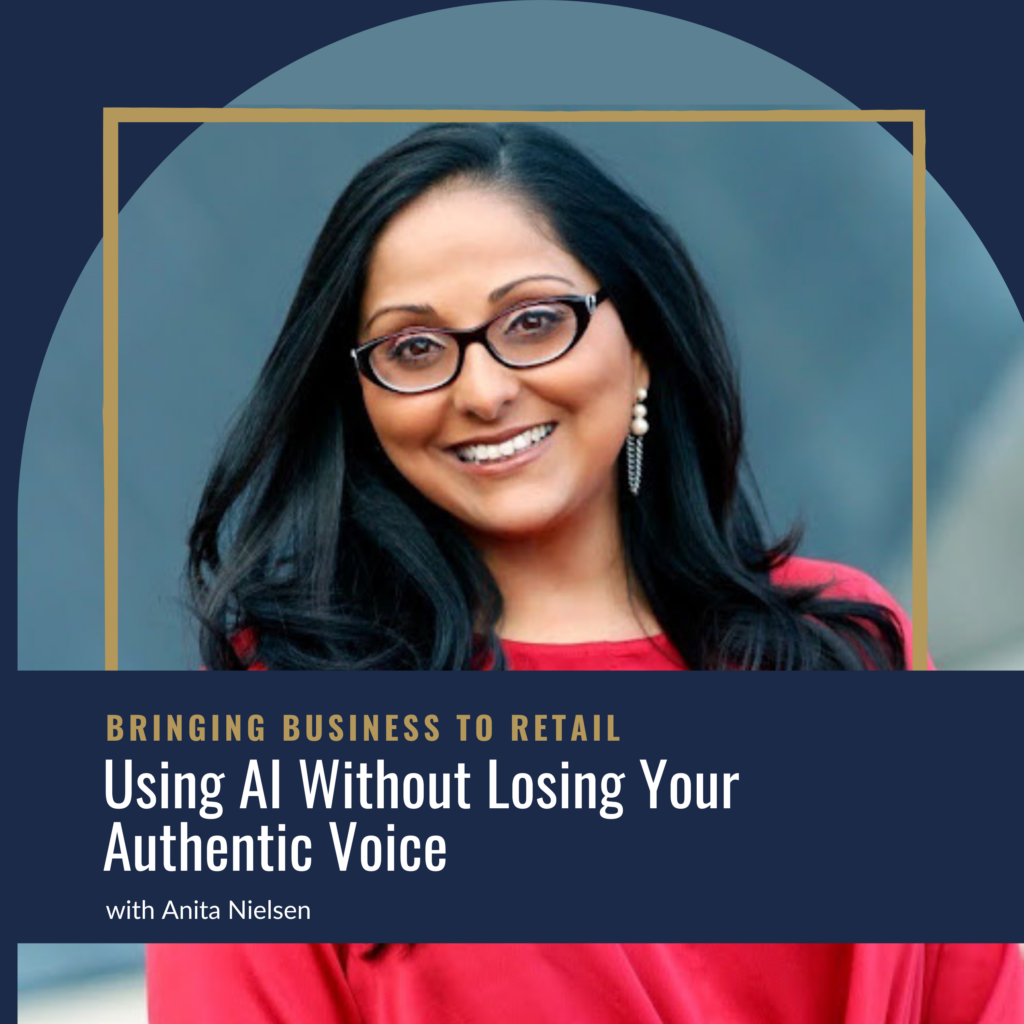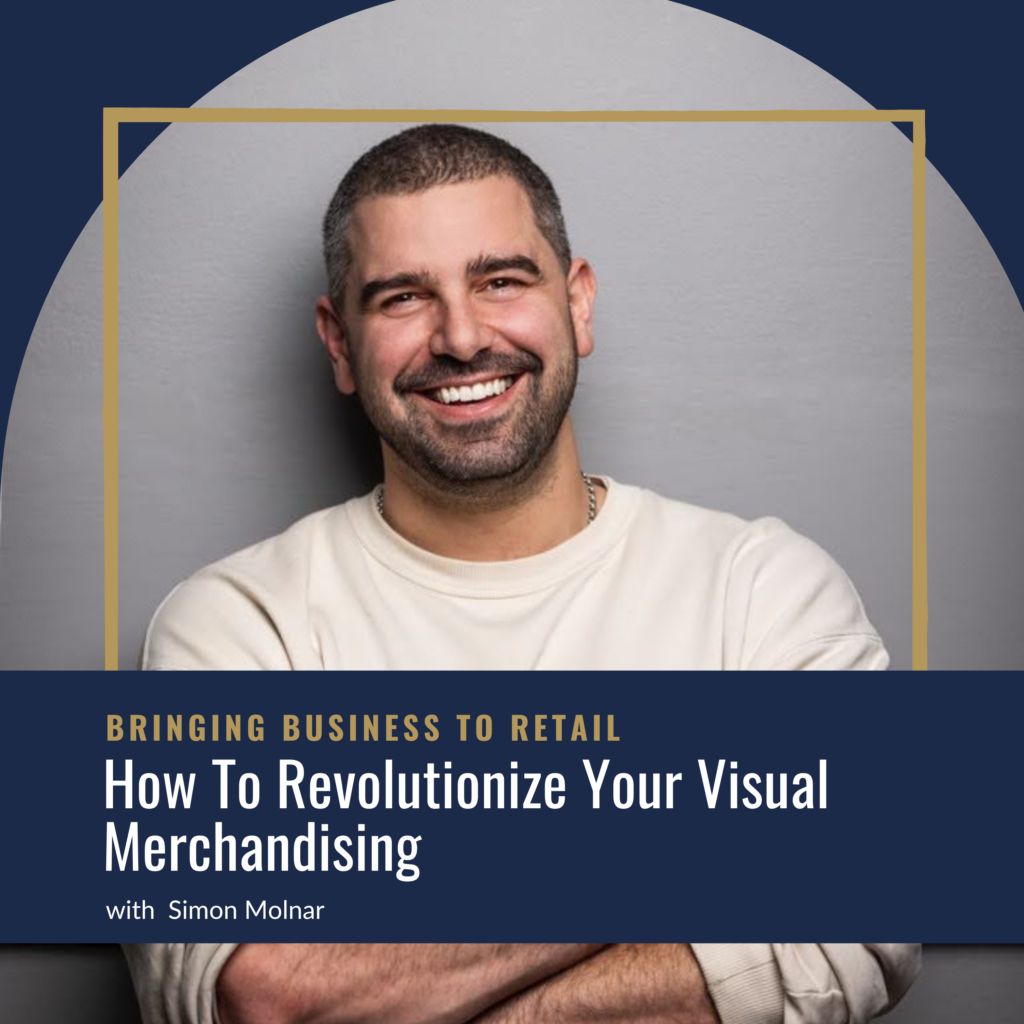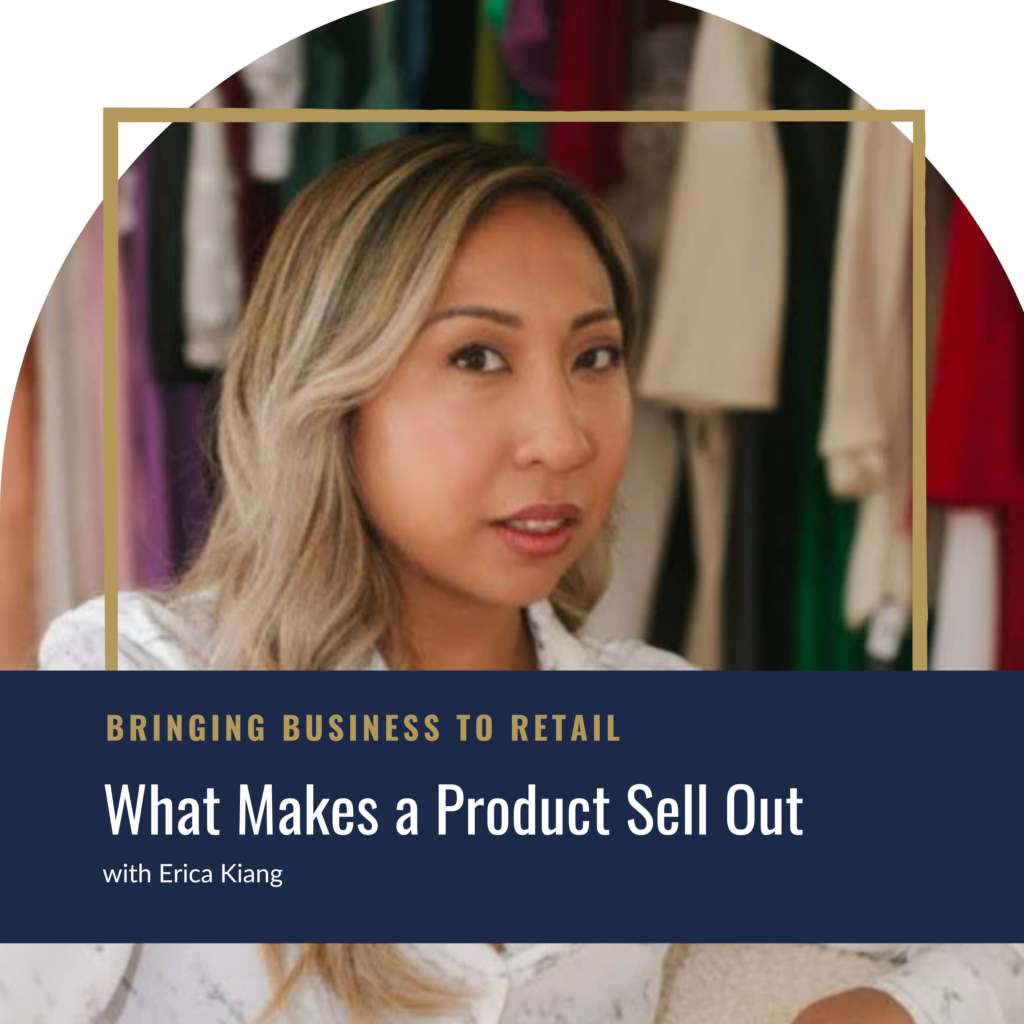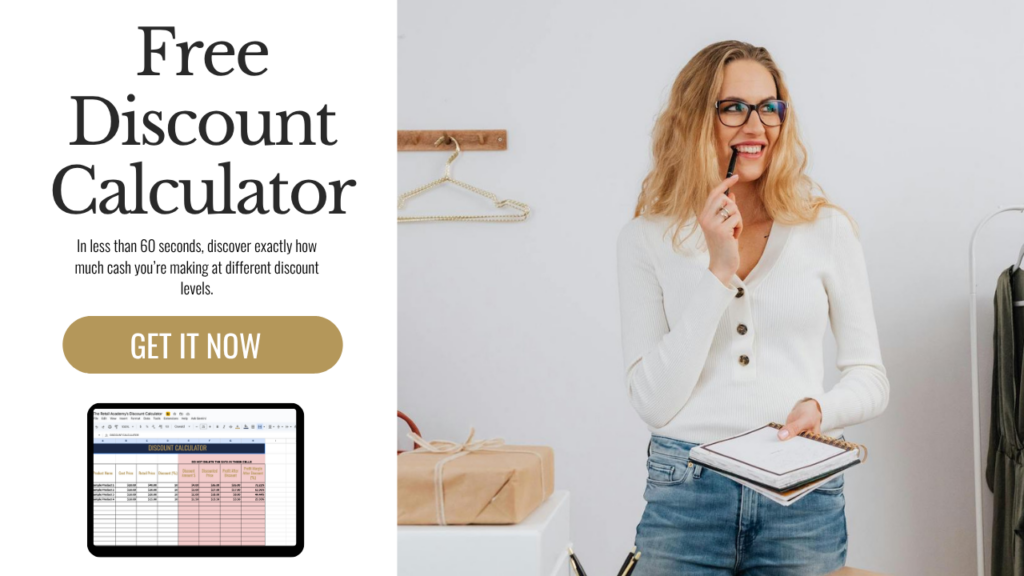
As we gear up for the holiday rush, I know you’ve got a stockpile of promotions ready to unleash.
But wait!
Before you flood those inboxes, spend a ton of money on ads, and rearrange your merchandise, let’s talk about a real threat to your marketing efforts: A little thing I’ve named: Promo Burnout.
It’s when your customers start treating your emails like that one relative who always overstays their welcome at family gatherings. Not good, right?
Nearly 70% of users unsubscribe from emails because the business sends too many.
It’s a balancing act.
Not enough emails, you’ll lose sales to your competitors.
Too many, they unsubscribe and that’s a lot of potential holiday cheer (and sales) walking out the door.
In this episode, I’m sharing five strategies to keep your promotions fresh and your customers engaged.
They’ll be great to roll out over the peak season, but really, you can use these any time of year.
Let’s dive in!
———-
Avoiding promo burnout in marketing efforts. 0:02
Holiday sales and promotions, with tips for planning and executing effective campaigns. 2:38
Holiday marketing strategies for retailers, including timeline and promotions. 7:35
Strategic marketing campaigns during holiday season. 13:20
Promotional strategies for small businesses. 17:53
Measuring data for promotions, including tracking customer acquisition cost, cart abandonment rate, and product performance. 23:20
Promotional campaign planning and debriefing for holiday season success. 28:18
LISTEN NOW on The Bringing Business To Retail Podcast
0:00:03 - (Salena Knight): Hey there, and welcome to the bringing business to retail podcast. If you're looking to get more sales, more customers, master your marketing, and ultimately take control of your retail or e commerce business, then you're in the right place. I'm Selena Knight, a retail growth strategist and multi award winning store owner whose superpower is uncovering exactly what your business requires to move to the next level.
0:00:33 - (Salena Knight): I'll provide you with the strategies, the tools, and the insight you need to scale your store. All you need to do is take action ready to get started?
0:00:51 - (Salena Knight): As we gear up for the holiday rush, I know that you've been listening to my series on making sure that this Q four is your best Q four ever. You've looked over your emails, you've stolen my Q four success blueprint. You've realigned and reassessed, and hopefully you, my friend, are ready to go. Now, just as an aside, if you are listening to this intro and you're thinking, hold on, I did not hear that episode.
0:01:17 - (Salena Knight): If you have missed any of those, trust me, they were really, really good. And if you wanna make the most amount of money ever, then you wanna go back and listen to them. So I highly recommend that you go back and download them. Click save. Make sure that you press subscribe so that you don't miss out on any future golden nuggets. Each one of these episodes builds upon each other. If you've been listening, I know that you already have a stockpile of promotions ready to unleash.
0:01:47 - (Salena Knight): But before you flood those inboxes, before you spend a ton of money on ads, and before you rearrange your store merchandise, I want to talk to you about a very real threat to your marketing efforts. It's something nobody ever talks about. It's a little thing that I have named promo burnout. When your customers start treating your emails and promotions like that one relative who overstays their welcome at family gatherings, no, that is not good. And we are going to make sure that that doesn't happen for you. Consider this.
0:02:20 - (Salena Knight): HubSpot reports that nearly 70% of email subscribers will unsubscribe when a business sends too many emails. So when you combine that with the fact that sales tells you that you should send more emails, it's a very delicate balancing act. Not enough. You're going to lose sales to your competitors. Too many and people are going to unsubscribe. So that is a lot of potential holiday cheer and a lot of holiday sales just walking out the door. For many of you listening, this is the time where you are going to make 50, 60, even 70% of your annual revenue. So you have to make these promotions work.
0:03:01 - (Salena Knight): Remember, there are no do overs. So, according to the National Retail Federation, holiday sales in the US last year between November and December 2023 grew 3.8% over the previous year. Now, that was despite the fact that we had inflationary challenges at this time, them last year. Now, we don't know whether that number is going to continue to grow and we don't know if that number is going to drop just yet. But what we do know is last year Deloitte's holiday retail survey found that consumers plan to visit an average of 6.8
0:03:43 - (Salena Knight): retailers during their holiday shopping. Now, that was up from 5.9 in 2022 and I predict that that number is going to rise again this year. What does that mean for you? Well, what it means is people are shopping around, people are looking for the best deals. Your customers are waiting to see where they are going to buy their products from. Loyalty isn't the biggest factor, which means competition is fiercer than ever and standing out in the crowd is crucial.
0:04:17 - (Salena Knight): But don't worry, I've got your back. Today, I'm going to share with you my five strategies to keep your promotions fresh and to keep your customers engaged. They will be great to roll out over Q four, but realistically, you can use these anytime. If you have a rollout of promotions, then you can use these strategies any time of year. All right, let's dive in. Number one, I want you to put a timeline on your actions. So if you did listen to my Q four success blueprint episode, what we did was we mapped everything out. We reverse engineered what was going to happen and when, because timing is everything.
0:04:57 - (Salena Knight): You don't want to just be pushing promotions out willy nilly. Oh, wow, we need some cash flow. Let's run a sale. No, you can't be doing that in this period of time because if you are just doing ad hoc promotions, you'll either end up with promotional burnout or you'll end up just losing sales because people aren't paying attention or people aren't getting the amount of emails that they need or they aren't seeing the products that they need when they walk into your store. I talk a lot about email because email drives customers.
0:05:30 - (Salena Knight): And when I say email, I'm going to say I'm using email with SMS interchangeably. I know one of our five xs was just saying recently that her customers don't want emails, they just want SMS's. I don't know about you, but I delete hundreds of emails every single day. Whereas an SMS I still look at. And it's funny, I've been getting SMS from a furniture store recently and it's like, I don't need a new dining table, I don't need new chairs, but I haven't unsubscribed. I haven't replied stop because I'm waiting. I'm waiting for something in particular. And the minute I see that promotion, I will be clicking. So when I say email throughout all of my episodes, please feel free to interchange it with SMS. So we need to create a carefully planned promotional calendar, which means you need to space out your offers to build anticipation and to avoid overwhelming your audience.
0:06:31 - (Salena Knight): Think of it like the perfect movie. There's the hero's journey. Your promotions need to be like that as well. Something big and then tapering off. And then something big tapering off. This is not just about picking random products or random dates. It's about crafting a strategic timeline that keeps your audience engaged without overwhelming them. So what does that look like? Remember, we don't want them unsubscribing. So what does that look like? Let's talk about the holiday shopping calendar, for want of a better word.
0:07:05 - (Salena Knight): According to the NRF, 40% of consumers started their holiday shopping before, wait for it, Halloween. I know I am not that person. I am not that prepared. I am a December kind of person. Maybe I will buy something in the Black Friday sales if I already know that. It's on my list of things in my ideas, in my head. But realistically, I'm a busy person. I am that person. I am that last minute shopper. I'm the 60%, but 40% of your customers.
0:07:42 - (Salena Knight): And I hazard a guess to think that that number is going to be much higher this year as people look to spread their spending out, as people are waiting for the deals to come up, people are tightening their belts. And so they want to be knowing that they've got the best value. But there are people out there buying for Christmas before the Jack O'lanterns have even gone out and well before the Black Friday cyber Monday sales.
0:08:10 - (Salena Knight): With your customers tightening their belts, I can see that that is a much, much more likely trend to continue upwards this year. And that means that your timeline needs to start way earlier than you think. So what I thought it would be handy to do is walk you through a bit of a timeline of what that might look like in early October. You could start teasing out your holiday offerings now. Maybe that's a sneak peek of products or hints about upcoming deals.
0:08:42 - (Salena Knight): This is also the best time, I think, to be pre loading your customer database. This is the time that you use to increase your email subscribers and increase your customer database. So the promotions that you are running in early October might be focused around increasing customers, not just about products or just about sales or discounts. When we get to that kind of late October, early November, you might want to launch your holiday gift guide because this is setting the stage for your promotional season.
0:09:14 - (Salena Knight): Remember, we've got a whole season of promotions coming up. Now, I will say that what I have noticed is that the Black Friday promotions, which used to start, you know, a week or two out before Black Friday, seem to be starting much earlier. In fact, some retailers are starting their Black Friday promotions at the beginning of November. Maybe that doesn't work for you, and I'm not saying that that's exactly what you should do. But what I am saying is you need to be keeping track of the kinds of deals that your competitors are using to bring their customers in because it might mean that you need to pivot a little.
0:09:53 - (Salena Knight): If you've had a big retailer just do the same promotion that you wanted to do, but with a bigger discount, then maybe that's not the best promotion for you to run. You might. Well, you will need to be flexible, but you might need to change these things as you go. You may also need to change your timeline. So, thinking about being prepared if you were going to start your Black Friday Cyber Monday promotion the week before, what I can tell you is that any advertising costs will be through the roof because Black Friday Cyber Monday is the biggest trading time in the entire year.
0:10:33 - (Salena Knight): Many businesses will make more in those four days than they make in this whole for the whole rest of the quarter combined. So the Black Friday promotions should be your best deals. They should get a lot of hype and they should build a lot of excitement, and they should be the promotions that will bring in the most amount of money for you. Then we move through to early December. So what you're going to do in early December is focus on those last minute shoppers and procrastinators like me.
0:11:03 - (Salena Knight): So what am I looking for if I'm buying in December? Things like fast shipping times. I want to make sure that it can get to me when I can. Easy returns and exchanges, the ability to buy it in stock. Right now, whether I am shopping online or I'm buying in person, I will go to the effort of going to the mall. And as I say that if you're watching this video, I am rolling my eyes at the same time, because you would think someone who is in retail loves shopping.
0:11:30 - (Salena Knight): My friend, I do not love shopping and I do not love shopping. At Christmas time in a mall, all the holiday zillas come out and I'm not that kind of person. And so you need to be thinking about what would sal one, what would the kind of person who is waiting to the last minute, what is important to them, what do they value? And then when you hit mid December, when you're hitting that 15 December, maybe the shipping times are just about up communicating. Shipping times is really important.
0:12:00 - (Salena Knight): But, and that could be a whole promotion in and of itself. Remember, promotions don't have to just be sales. Promotions don't just have to be about a product. There could be a whole promotion around the fact that your shipping deadline is approaching. And then when you hit mid December, so, you know, think 15 December ish, that's when you are promoting things like gift cards and digital products. And for those truly last minute spenders like me, and if I know, here's a tip. If I know getting into the head of a last minute shopper, if I know that I'm going to buy a gift card for somebody, I will quite often not buy it until Christmas Eve or even Christmas morning.
0:12:41 - (Salena Knight): Why? Because I want my recipient to have the longest amount of time possible to be able to redeem that gift card. Now, I'm not saying everybody thinks like me. I'm just trying, trying to give you a little bit of an insight as to what I'm thinking when I'm buying those gift cards. So do not think that stopping your emails on the 23 December or even 24 December is an option. You could be sending out emails on Christmas Day promoting gift cards. I mean, I don't know about you, but we've had those situations where the girlfriend of someone came that we weren't expecting and you're like, oh, I really should get them something cheap. Gift card.
0:13:22 - (Salena Knight): Cheap gift card. An easy gift card where you can just buy online. So do not forget that people are human and we have a lot going on and some of us get caught in certain circumstances and situations, and some of us just plain old forget. Now, within this framework, you need to strategically space out all of those individual promotions and you can start to see why. Now, we've talked about what do we have five, five or six different times that you can promote? And we didn't even factor in Halloween, Thanksgiving, Father's Day, all that kind of stuff.
0:13:57 - (Salena Knight): And so when you map this out, you will start to see that there's probably going to be a lot of promotions happening. In fact, you may have promotions happening on top of each other. And here is where the concept of promotional pulsing comes in. You may not have heard of that, but instead of a constant barrage of deals, it's really about creating those peaks of promotional activity followed by the quieter periods and having those different types of campaigns. Having the customer acquisition campaigns followed by that was an up, followed by a period of maybe just some updates and knowledge and things like that, and then followed by things like sales.
0:14:35 - (Salena Knight): So this is what keeps your audience, your customers anticipating what is next without feeling bombarded. Now one of the reasons I don't like going to the mall at Christmas time is I don't have sensory issues. And I don't know how anyone who has sensory issues can do it. But just the constant barrage of things like sales in every single window, all of that is just way too overwhelming. Which is why I'm actually an online shopper. More than anything else, you don't want your customers to feel like they're being bombarded either.
0:15:07 - (Salena Knight): If you do this promotional pulsing, you will find that they are much more likely to spend rather than wait around to see if there are better deals elsewhere or just unsubscribe, what might promotional pulsing look like? Well, you might run a three day flash sale and then you might just follow follow that by a week of regular content. Maybe it's a product review, maybe it's featuring one of your customers.
0:15:31 - (Salena Knight): It's not a call to action, which is buy my stuff. And then you might have a one day exclusive offer for your vip club members. You start starting to see here the importance of planning because you might have two campaigns running at the same time, one to your everyday customers and one to your vip's. All of that takes planning. So hopefully you can see that prior planning gives you peak performance.
0:15:57 - (Salena Knight): The four P's. I hope you can. Another crucial aspect of your timeline is leveraging scarcity and urgency. If you aren't aware of FOMo, everyone's aware of FOMo, right? The fear of missing out. It is so powerful in marketing. Studies show that emails with a sense of urgency have a 14% higher click to open rate and they have a double the transaction rate of email. Twice as many transactions will occur from emails that have a sense of urgency. So think about your messaging. It doesn't matter if it is in your window, it doesn't matter. This is why we see while stocks last 24 hours only flash sale, three days only.
0:16:43 - (Salena Knight): All of that is fear of missing out. So think about how you're going to incorporate fomo into your messaging and it could be 24 hours sale, or while stocks last, or for the first 20 customers only, or only twelve available. But here's the key. You've got to make sure that these limited time offers or limited product offers, they have to be genuine because customers can spot fake urgency a mile away. I mean, I go to temu every now and then. I don't like buying from there, but every time I go there to have a look at something, I've clicked on Google shopping and I've clicked on something and I'm on the TMU website and it says buy in the next 4 hours for free shipping with a little ticket going on.
0:17:28 - (Salena Knight): I'm like, do you have free shipping all the time? This is just B's. Customers can spot that stuff from a mile away. And honestly, if you eroded, if you erode their trust, they will just unsubscribe. They just will stop shopping with you. A well planned out timeline is about avoiding burnout, but also creating that narrative arc for the holiday season that keeps your customers coming back for more. The next thing that you need to do to keep your promos fresh and keep your customers engaged is to know your superpowers. Here's a hard truth. Superheroes only live in comic books. And trying to be one person to do all of this stuff or delegating responsibilities to people who quite simply aren't equipped with the knowledge or the time or the resources to get the job done is just a fast track to promotional burnout and missed opportunities.
0:18:23 - (Salena Knight): If you are asking your sales associate to be posting on social media but they don't have a clear framework or they don't even know what is trending on TikTok, it's not going to get you a good result. So look at who is good at what and what are you truly best at. Maybe what you're great at is product development or choosing the products or customer relations. You should be focusing on these areas as well as running your business and then delegate the risk. Because according to a Gallup study, business owners who delegate grow their businesses faster, they generate more revenue and they create more jobs. So if you are not good at email marketing, then you shouldn't be the person tasked with email marketing. Remember, this is your time to bring in up to 70% of your revenue and there are no do overs.
0:19:12 - (Salena Knight): Do you really want the fate of your business bank account to be in the hands of someone who is sending out an email just to check off a box and say that it's done? Or do you want someone who will test subject lines, who will segment your list, who will recenter unopened because they have a target that they have to hit and they know what they're doing? The same goes for every part of your business. Whether it is marketing, whether it is people on your shop floor, whether it is product choices.
0:19:38 - (Salena Knight): Know your superpower and know your team superpowers. And leverage those. And make sure you have KPI's in place as well. That brings me to building a a reliable team. If you don't already have a team, now is the time to start building one. Even if it is just a seasonal team. That could mean bringing in outsourced freelancers, or hiring an agency to do your ads, or your email marketing, bringing in sales associates to help you on the shop floor, all of those things. It could be outsourcing your graphic design.
0:20:11 - (Salena Knight): Because remember, we're prepared now. Outsourcing your graphic design, or outsourcing your copywriting, or your email campaigns, or even your data analysis, your promotions will burn out quicker than a cheap candle if they have the wrong messaging, if your merchandising is subpar, if your product assortment is wrong, or if your website hasn't been optimized. So that is the perfect segue to number three, to avoid promotional burnout, which is leveraging technology.
0:20:39 - (Salena Knight): If you listen to my email podcast that I did a couple of weeks ago, I talked a lot about personalization. Now, personalization isn't just monogramming. Personalization literally can be as simple as the click of a button to send out a personalized email to me based on my browsing and buying behavior. Things like social media scheduling tools can mean that your promotions are planned out well in advance, right down to the last minute.
0:21:05 - (Salena Knight): AI can handle your customer support and your frequently asked questions, or write your product descriptions and even edit your product images. It is time now to work out the choke points that your business currently has. Because if it is a sticking point right now, it is only going to get bigger and stickier when you bring in more customers with your promotions. And your promotions will burn out if you are not fulfilling on the backend.
0:21:29 - (Salena Knight): Customer expectations are so much higher than they used to be. So that is three so far. Number four, remember, I had five promotional strategies. So five promotional strategies. Five strategies to make sure that your promotions don't flop and to make sure that you keep your customers engaged. Number four is about measuring your results. Because you know that I am a firm believer that most of your problems, in fact nearly all problems, can be fixed by looking at the data.
0:21:58 - (Salena Knight): Measuring your results isn't just a nice to have, it is a must have for business success. So here is how I approach it. Every promotion that you will do should have an end goal. Now, it is not always about sales. Some of the things we talked about is doing a promotion to build your customer database or doing a promotion to maybe reengage your existing customers. Remember, the point of mapping out your promotions is so that your customers aren't being bombarded.
0:22:24 - (Salena Knight): You have to have that promotional pulsing in place. Keep your customers interested without overwhelming them. In order to do that, we need to establish a baseline before your promotions even kick off. Have baseline metrics and all of your KPI's because this is going to give you the comparison to measure your holiday performance against. And you can do this by looking at your historical data. But what I like to do is couple that with industry benchmarks. So places like Shopify and Klaviyo, they will have industry benchmarks for pretty much everything and they will have industry benchmarks for the holiday season as well. So looking at what are other people in your niche doing? What are other people in the beauty industry doing? What are other people in the pet industry doing? What are these numbers that you should be basing your KPI's off and putting those targets in place with? So once you've had that work out, what's important.
0:23:20 - (Salena Knight): So this all ties back to why you are running the promotion. A customer acquisition promotion is going to have very different metrics that are important to a product launch promotion. The information you need might be the customer acquisition cost is way more important for a customer acquisition promotion than your car abandonment rate. But if you're running a product launch, you might want to know your car abandonment rate. That would be key.
0:23:44 - (Salena Knight): But it's not key to something like a. Well, it may be key, but it's not going to be top of mind for a customer acquisition strategy. So know what is important. Don't just collect data for the sake of collecting data. And speaking of data, make sure that you segment your data. Don't just look at the overall performance. Break down your data by. Let's just take those examples. If you're doing a product launch, you might want to look at which sizes or which colors or which shapes sold best.
0:24:16 - (Salena Knight): If you are looking at a product launch, maybe you might want to look at which of your customer segments spent the most amount of money or which of your customer segments were the most engaged? Was it a the new customers who were brand new to your brand? Or was it the customers who have been around for a long time? Was it the customers that spend more versus the customers that don't spend more? Where did they come from?
0:24:38 - (Salena Knight): Was it organic? Was it paid? Was it email? Was it social? How did they shop? Was it on mobile? Was it on desktop? This granular view can give you the insights that you need and things that you would otherwise miss. And when you have all of this data, when you have remember the important data, not just all the data. There's no point having data if it's not useful or if you're not going to look it. But when you have this data, it will help you realign where you're spending your money. It will help you adjust what you're posting on socials and the messaging in your promotions moving forward.
0:25:11 - (Salena Knight): So set up a schedule for regular reporting. Now, I'm going to go so far as, say, during Black Friday and Cyber Monday. Your reporting should almost be hourly. I know it sounds like a lot, but you need to be adjusting. If something is working well, you want to be able to do more of it. Remember, there's a really good chance if you are in the Black Friday Cyber Monday space, there's a good chance that what you make in those four days is going to be more than you make in the whole month. So you can see why understanding what is selling, what is not selling, and being able to adjust things like your spend or sending out a different email is really important.
0:25:49 - (Salena Knight): I also think that during a product launch, you should be looking at daily and then for the rest of the time you probably want to be looking at weekly for the holiday season. So share these reports. Share these with your Ecom team, with your in store team, with your paid ads team. Make sure everybody is aligned and on the same page. Because what's working in one channel may not be working in another channel, or what is being utilized in one channel might not be being utilized in another channel. And they might be able to pivot and put those changes in place really, really quickly. Remember, the goal to measuring data is not just to collect data for the sake of data, it's to gain actionable insights.
0:26:29 - (Salena Knight): It's to allow you to pivot when necessary. Every metric that you track should have an action attached to it. If it doesn't, then you don't need to be tracking it. Do you need to spend more money? Do you need to spend less money? If your email open rates are low. Maybe you need to revamp your subject lines. Maybe you need to do some more testing. If certain products are underperforming, perhaps they need better placement. Maybe they've just been not highlighted. Maybe you need to do a promotion on them. Every metric should have an action that you can attach to it. We are nearly there, my friends.
0:27:04 - (Salena Knight): I want these promotions to give you the most amount of customers, the most amount of sales, and the most amount of revenue. So, number five, step number five. Step number five. Number five is debrief. Never underestimate the power of knowing what worked and what didn't after every single promotion. And this is not just in Q four. This is every single promotion that you run. And in Q four, I would also do it as an end of season. Gather everyone on your team, anyone who was involved, to go through a debrief.
0:27:40 - (Salena Knight): Which campaigns knocked it out of the park? Which ones fell flat? Be honest and be thorough. And most importantly, document everything. Because the data that you have, and this doesn't have to be lengthy, we have a debrief form. It's one page. It's simple. One page. This is a goldmine of secrets. And it will be your secret weapon that you can use for your next promotion. It is a secret weapon that your marketing team, your sales team, your paid ads team, they can use all of this to give them the insight to make the next promotion better than ever. You might be thinking, what does a debrief look like and when should you do it?
0:28:18 - (Salena Knight): Well, the first thing I have to say is make sure you schedule it ASAP. Don't wait too long. Honestly, if you're doing a promotional campaign, I like to do it the next day. Maximum three days out. Everything still needs to be fresh in everyone's mind. And remember, especially in Q four people are already moving on to the next thing. So if you can do it the next day, to me, that is the best time you can take action.
0:28:42 - (Salena Knight): You can make any adjustments you need to and you can continue to move forward. Make sure you get input from everyone who is involved. I don't care if they are in house, if they're a contractor, if they're a freelancer, if they're just seasonal staff, but get their input. Anyone who played a role in your promotion, marketing, sales, customer service, logistics, everyone. Different perspectives will give you different insights as to where those choke points are, where those changes need to be made. And then look at the data.
0:29:11 - (Salena Knight): Come prepared with the holiday. Make sure everyone comes prepared with their metrics and their KPI's and compare them not just to the goals and targets, but also to the previous quarter or the previous promotions performance. When you're doing these debriefs, it is crucial to make sure that they're not focused on blame. The idea of a debrief is to encourage open and honest feedback. So you need to create an environment where everyone feels safe sharing not just all the things that went right, but also the things that went wrong. And remember, when you do this, you will often find that people will put their hands up. If you have a safe space, people will put their hands up and say, oh, I forgot to do this, or I was so busy this didn't go out on time, or I wasn't quite sure about the creators and I. I probably should have tried both of them. People will take responsibility for their own actions if blame is not associated. If you make it really clear that this is just making the next thing better, and then something that quite often gets forgotten is to look at your customer feedback.
0:30:14 - (Salena Knight): Look at any support tickets that you might have had, look at any social media comments. Were there complaints coming in? Were there lots of people talking about how fantastic something was? And once you have all this information, just distill it down into, say, three to five key learnings. I know for us, sometimes it can be quite simple as what worked, what didn't, what didn't we do that we should have done, and what did we do that we would do differently? Is that the same thing?
0:30:43 - (Salena Knight): Make sure you document everything and put this together in just a simple one pager because every single one of these will build on the next. Remember, the goal of a debrief is not just to dwell on the past, but to pave the way for an even more successful future. It's about learning from your experiences. Oh wow. I feel like we've covered a lot of ground today from crafting the perfect promotional timeline.
0:31:08 - (Salena Knight): Uncoverage. Uncovering, uncovering and leveraging your superpowers. Using technology, using data to be able to adjust and pivot as necessary. And finally, wrapping it all up with a bow, with a debrief. Five powerful strategies to avoid promotional burnout and make this the most successful holiday season for you yet.
0:31:31 - (Salena Knight): So that's a wrap. I'd love to hear what insight you've gotten from this episode and how you're going to put it into action. If you're a social kind of person, follow me, Heselena Knight, and make sure to leave a comment and let me know. And if this episode made you think a little bit differently or gave you some inspiration or perhaps gave you the kick that you needed to take action. Then please take a couple of minutes to leave me a review on your platform of choice, because the more reviews the show gets, the more independent retail and e commerce stores just like yours that we can help to scale.
0:32:11 - (Salena Knight): And when that happens, it's a win for you, a win for your community, and a win for your customers. I'll see you on the next episode with.
Share this episode
Watch The Video



